One Man’s Passion: Catching Fish in the Act of Spawning and Sharing Their Secrets
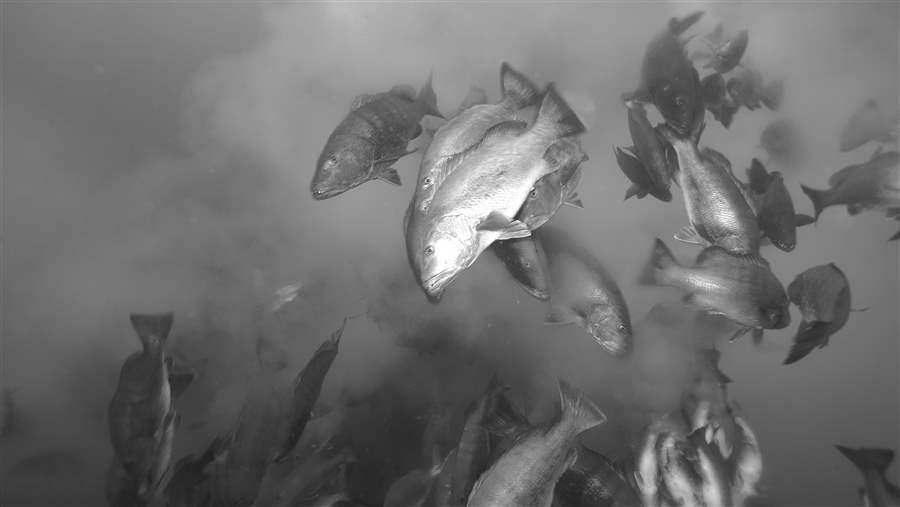 © Douglas David Seifert
© Douglas David SeifertCubera snapper (Lutjanus cyanopterus) spawning at Gladden Spit in Belize in 2002.
This piece was previously published in National Geographic.
Will Heyman is a fish stalker.
The Texas marine scientist is obsessed with finding and watching groups of fish that gather in special places to spawn.
While this may seem an odd passion, witnessing breeding behavior is part of a critical mission to help save marine life. By working with fishermen, scientists, fishery managers, and others to document what he sees, Heyman hopes to persuade leaders to protect these mating meccas, thus giving a boost to fish populations and helping depleted species recover.
“Do we go to sea turtle nests and destroy all the eggs?” asks Heyman, a senior marine scientist for the consulting firm LGL Ecological Research Associates. “Humans have learned to respect and protect these vulnerable places for some species, but for some reason we still catch fish where they aggregate to spawn. It’s not an ethical way to interact with a species that we depend upon. And from a practical view, if you want to keep eating some of these delicious fish, we’ve got to act.”
Heyman’s findings have helped build the case to protect spawning grounds in places such as the southeastern United States, Belize, Mexico, and Honduras. Most recently he has documented spawning in the U.S. Gulf of Mexico.
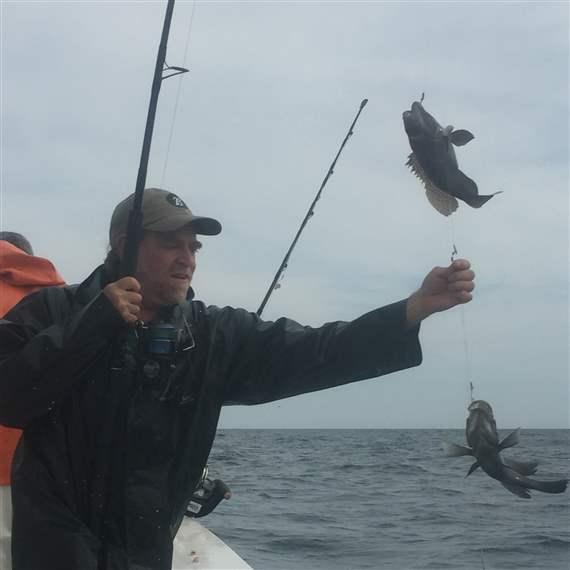 © The Pew Charitable Trusts
© The Pew Charitable TrustsWill Heyman catches black sea bass during a cooperative research expedition off the coast of North Carolina in May 2016. The expedition was designed to establish baseline information on spawning sites for snappers and groupers in the U.S. South Atlantic.
Heyman, who has a doctorate in marine science from the University of South Carolina, has taken it upon himself to get people excited about the hidden lives of fish. In his presentations to audiences that range from students to fishermen to policymakers, Heyman shows videos of fish, sometimes gathered by the thousands, swarming in a growing frenzy over hours or days, releasing thick white clouds of eggs and sperm. Groups of spawning fish, Heyman says, sometimes take the shape of a big wand, sprinkling reproductive matter like fairy dust. Other schools gather in cone-shaped masses, blasting the swirling clouds upward like a volcano.
“It’s the most spectacular thing I’ve ever seen!” exclaims Heyman, laughing with the enthusiasm he brings to all of his audiences. “You see the interactions among the animals, the flow, the courtship coloration, and dances within the school of fish.”
Heyman is a small man with a big presence. While some fish scientists speak seriously when punctuating their speeches with charts and graphs, Heyman takes the same materials and puts on a performance. He shouts, laughs, and gestures so wildly that it sometimes looks as though he might fall over. If you didn’t care about fish before, you almost certainly will after just a few minutes with him.
“Mass spawning events can almost seem sacred, especially when you think hundreds of thousands of years of evolution have brought this together,” he marvels. “It’s just amazing to be at the epicenter of such an important phenomenon.”
The Maryland native brings to bear 45 years of observing fish—starting when he was just 5 and exploring tide pools and snorkeling through sea grass beds in a foot of water off St. Martin in the Caribbean Sea.
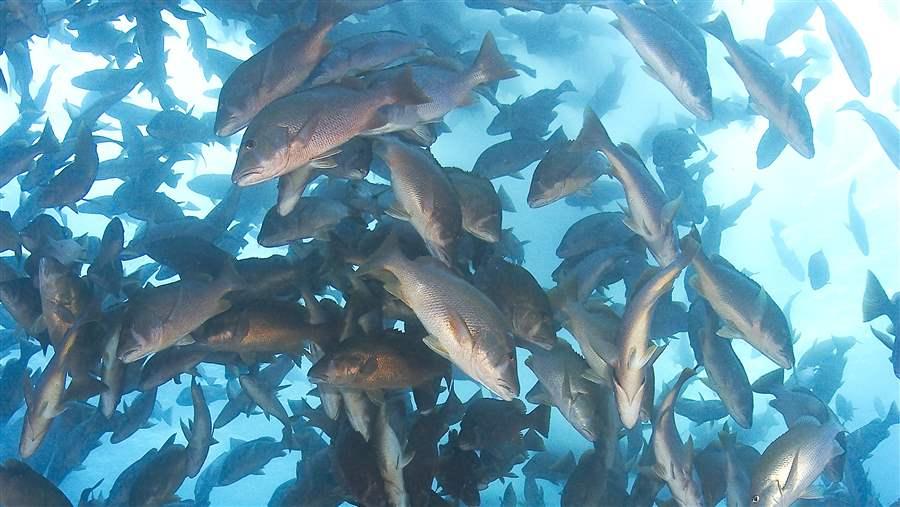 © Douglas David Seifert
© Douglas David SeifertDog snapper (Lutjanus jocu) gather to spawn at Gladden Spit in Belize in 2002.
Along the way, Heyman has earned a reputation for pinpointing spawning sites—no easy task in the vastness of the ocean. He uses many methods to find spawning fish, including working with fishermen to figure out when and what species they catch—because many seasoned fishermen observe wildlife behavior patterns and are sometimes well-aware of fish breeding sites. Heyman cross-checks their observations with data from published studies, then heads out to sea.
He’ll spend four to five days aboard fishing vessels, combing an area to see if fish are in breeding condition. He looks for such things as dramatic color changes in the animals and telltale courtship behaviors. “Some fish take on such stark black and white patterns that it looks like they’ve put on tuxedos for the event,” Heyman says. If he is lucky, he’ll catch the action on video.
In Belize, he worked with local fishermen who were concerned about declining catches, and with local government authorities, scientists, and conservationists starting in 1995 to pinpoint spawning sites. The resulting discoveries prompted dozens of respected fishermen in 2003 to support fishing restrictions in most of the identified areas. As a result, Heyman says, it appears the Nassau grouper, which had been dwindling in numbers, is making a comeback.
The South Atlantic Fishery Management Council, which governs fishing in federal waters from North Carolina to Florida, recently voted to create five new protected areas to safeguard spawning fish from deep-water fishing. Heyman and other experts documented breeding activity at several of those sites, which they continue to study to collect baseline data.
The protections still need final approval from the U.S. Department of Commerce to take effect.
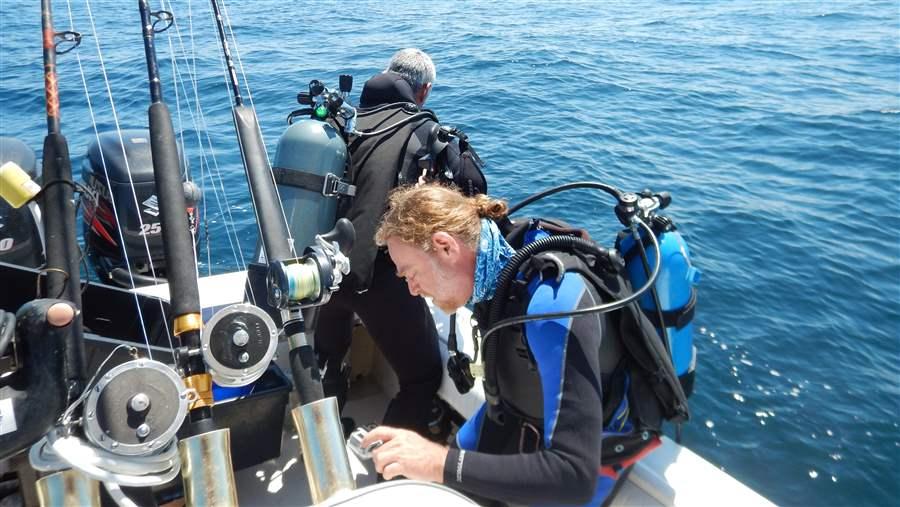 © Courtesy of Will Heyman
© Courtesy of Will HeymanWill Heyman (foreground) prepares to dive off the coast of North Carolina in May 2016 as part of a cooperative research expedition designed to evaluate seasonal gatherings of gag grouper.
Heyman says he hopes his work will play a role in persuading Congress to emphasize spawning protections as it considers renewal of the nation’s primary federal fishery law, the Magnuson-Stevens Fishery Conservation and Management Act.
In the meantime, he’ll keep stalking fish—and bringing his work home. Fish photos hang in every room of his house near Houston, and multiple sets of family dinnerware feature images of marine life. However, Heyman’s wife, Pegan, after more than a decade of fish-watching beach vacations, has finally put her foot down in favor of a trip to the mountains.
His response:
“Can we fish in the river?”
Lee Crockett leads The Pew Charitable Trusts’ efforts to establish policies to end overfishing and promote ecosystem-based fisheries management in the United States under the Magnuson-Stevens Act.
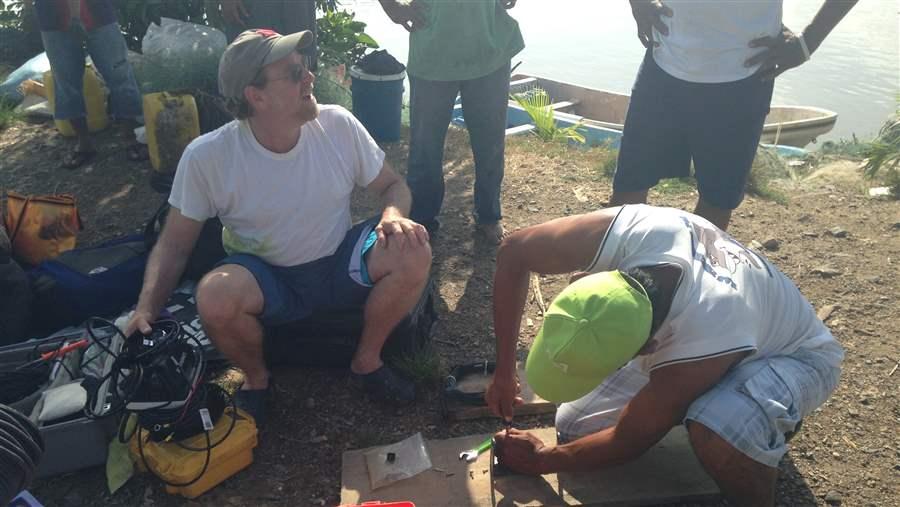 © Ana Giro
© Ana GiroWill Heyman prepares equipment to map the seafloor at a possible fish spawning site off the coast of Guatemala in 2015.






